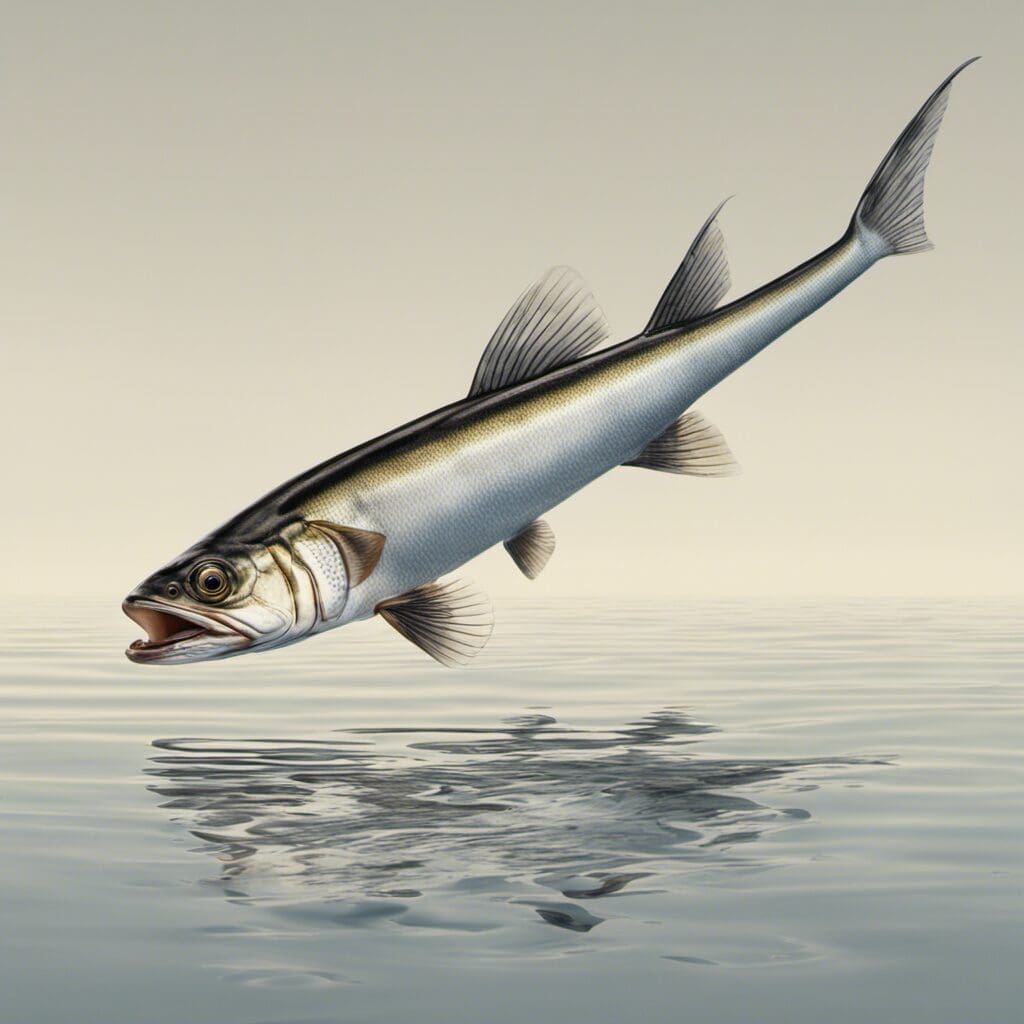Introduction
The Garfish (Belone belone) is a spectacular and fascinating species found in various parts of the world. It belongs to the family Belonidae, also known as the needlefish family.
Conservation Status
The Garfish is currently listed as ‘Least Concern’ on the IUCN Red List. Conservation efforts are not prominent as the species is quite abundant and widespread.
Statistics
The details about the garfish’s average and range of size, weight, and lifespan are presented in the table below.
| Statistic | Average | Range |
|---|---|---|
| Length | 60 cm | 23 – 100 cm |
| Weight | 700 g | 100 g – 1.5 kg |
| Average Lifespan | 5 years |
Distribution
Garfish are typically found in the North-East Atlantic Ocean, the Mediterranean and Black sea. Migration patterns reveal that the Garfish moves inshore during April/May for spawning, then back offshore during Autumn/Winter.
Habitats
The preferred habitat for garfish is seawater, particularly inshore coastal waters. They can be found within the depth range of 1 – 30 meters and prefer a temperate climate, with temperatures between 8 and 24°C.
When and Where to See
Most sightings of garfish are during Spring, specifically in April and May. Sightings tend to peak at dawn and dusk.
Best Fishing Locations
The top places to target garfish include:
- Norway’s coastline
- Southern British coastline, e.g., Cornwall and Devon
- Swedish west coast, e.g., Bohuslän and Halland coast
- Denmark’s coastline
- French coastline, e.g., Normandy and Brittany
- Spain’s Northern coastline
To find garfish in areas not listed above, locate inshore coastal waters with lots of small fish, as the garfish prey on these organisms.
How to Catch
Garfish are often attracted to small fish or squid used as bait. They can be caught using float fishing techniques or fly fishing techniques. Aim for dawn or dusk in the Spring months for the best chances of success.
Identification Guide
Garfish are easily identifiable by their elongated bodies, needle-like jaws, and bluish green color with a silver-white belly. A distinguishing feature is their green bones, and they have a more streamlined shape compared to similar species such as the needlefish.
Culinary
How to Cook & Taste Profile
Although garfish bones are green (due to a harmless pigment), the meat is delicate and tasty, similar to mackerel. It’s typically grilled or smoked and is a popular dish in Scandinavia and the Baltic region.
Nutritional Information
Garfish meat contain a good amount of protein, and are rich in omega-3 fatty acids, vitamins A and D.
Recipes
Popular recipes include røykt hornfisk (smoked garfish) popular in the Nordic countries and ensopado de agulhinha, a garfish stew, popular in Portugal.
Additional Information
Behavior
Feeding primarily on small fish, garfish have a fast strike and can leap out of the water when hooked. They spawn inshore in the spring and retreat offshore during the colder months.
Predators and Threats
Natural predators of the garfish include larger fish, seabirds, and marine mammals. The major threat to their population is plastic pollution as they mistake plastic debris for prey.
Cultural/ Historical Significance
The garfish has found its place in Danish folklore where it’s called “hornfish” and an annual ‘Hornfisk Festival’ is celebrated in the town of Ebeltoft.
References and Further Reading
For more detailed information on garfish, refer to marine identification books, fishing field guides, and academic research papers on marine biology. Reputable online resources include:
- MarLIN, The Marine Life Information Network
- FishBase – the World’s Largest Biodiversity Information Portal on Fish
Note: Always ensure the sourced information is up-to-date and from reputable resources.

